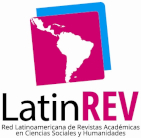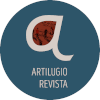Three Ages of Iconoclasm: Actions, Procedures and Screens Against Images
Keywords:
image, critic, attack, montage, screenAbstract
Given the structural diagnosis that we define as screen-centric, that is, a scopic system characterized by the ubiquity of screens in our daily lives, iconoclasm emerges as a possible critical action. In dialogue with a variety of contributions from different disciplines, this paper seeks to account for the contradiction we face when thinking about iconoclasm against digital images. On the one hand, today, images, due to their excess and overabundance, become self-canceling: the contemporary visual system works in an iconoclastic way insofar as it generates a hypervisuality that becomes unconsumable for any human being. On the other hand, we trace within this same saturated regime of screens the coordinates to recover the critical potentials stored in the historical movements of iconoclasm. To this end, we periodize iconoclasm by transposing what José Luis Brea called three eras of the image. We then conceptualize the three eras of iconoclasm: as gestures of destruction of the images-matter; as montage procedures in film images; and as a technological system in e-image.
Downloads
References
Amiel, V. (2005). Estética del montaje. Madrid: Abada.
Brea, J. L. (2010). Las tres eras de la imagen. Imagen-materia, film e e-image. Madrid: Akal.
Durán Medraño, J. M. (2009). Iconoclasia, historia del arte y lucha de clases. Madrid: Trama editorial y Fundación Arte y Derecho.
Fontcuberta, J. (2016). La furia de las imágenes. Notas sobre postfotografía. Barcelona: Galaxia Gutenberg.
Freedberg, M. (2017). Iconoclasia. Historia y psicología de la violencia contra las imágenes. Buenos Aires: Sans Soleil ediciones.
Gamboni, D. (2014). La destrucción del arte. Iconoclasia y vandalismo desde la Revolución Francesa. Madrid: Cátedra.
Hauser, A. (1978). Causas y consecuencias del movimiento iconoclasta. En Historia social de la literatura y del arte, vol.1 (pp. 176-181). Barcelona: Guadarrama.
Jay, M. (2003). Regímenes escópicos de la modernidad. En Campos de fuerza. Entre la historia intelectual y la crítica cultural (pp. 221-251). Buenos Aires: Paidós.
Kluge, A. y Liebman, S. (1988). On New German Cinema, Art, Enlightenment, and the Public Sphere: An Interview with Alexander Kluge. October, 46, pp. 23-59.
Kluge, A., Reitz, E. y Reinke, W. (1999). Wort und Film. En Ch. Schulte (Ed), In Gefahr und gröβter Not bringt der Mittelweg den Tod: Texte zu Kino, Fim, Politik (pp. 21-40). Berlín: Vorwerk 8.
Latour, B. (2002). What is Iconoclash? Or is There a World Beyond the Image Wars? En B. Latour y P. Weibel (Eds.), Iconoclash. Beyond the Image Wars in Science, Religion, and Art (pp. 15-40). Massachusetts: MIT Press.
Mitchell, W. J. T. (2016). Iconología. Imagen, texto, ideología. Buenos Aires: Capital intelectual.
Molina, M. y Roldán, E. (2023). Imagen total: un abordaje materialista de la digitalización y ubicuidad de las imágenes. Index, Revista de Arte Contemporáneo, nro, pp. 8-19.
Peleshyán, A. (2011). Teoría del montaje a distancia. México: Universidad Nacional Autónoma de México.
Rebentisch, J. (2018). Estética de la instalación. Buenos Aires: Caja Negra.
Romano, C. (2018). Un episodio iconoclasta en el itinerario de la Reforma Universitaria de Córdoba. En A. Agüero y A. Eujanian, A. (Comps.), Variaciones del reformismo. Tiempos y experiencias. Rosario: HyA ediciones.
Romano, C. (2009). Constricción y desvíos: disputas en torno a una imagen de Dimas. Revista Teórica. Teoría, crítica e historia del arte contemporáneo, 3. Fundación Rosalía Soneira, pp-23-29.
Schwarzböck, S. (2016). Los espantos. Estética y postdictadura. Buenos Aires: Cuarenta Ríos.
Schwarzböck, S. (2017). Los monstruos más fríos. Estética después del cine. Buenos Aires: Mar dulce.
Sontag, S. (2005). Godard. En Estilos radicales (pp. 225-289). Buenos Aires: Punto de lectura.
Steyerl, H. (2014). Los condenados de la pantalla. Buenos Aires: Caja Negra.
Downloads
Published
Issue
Section
License
Copyright (c) 2024 Manuel Molina, Eugenia Roldán

This work is licensed under a Creative Commons Attribution-NonCommercial-ShareAlike 4.0 International License.




















